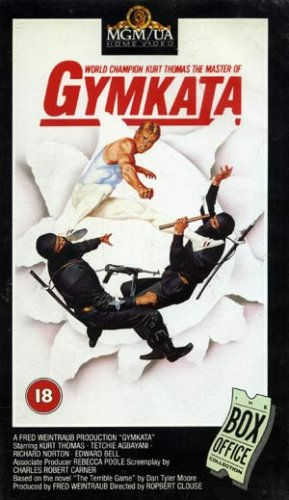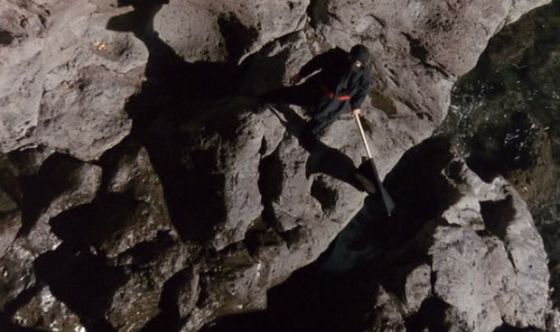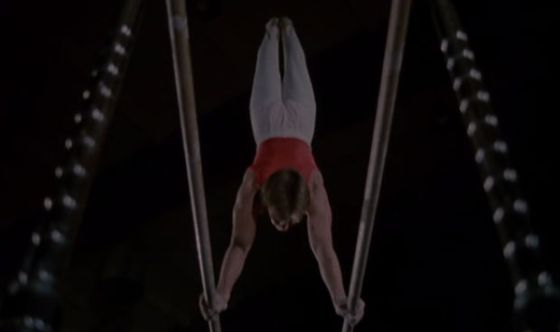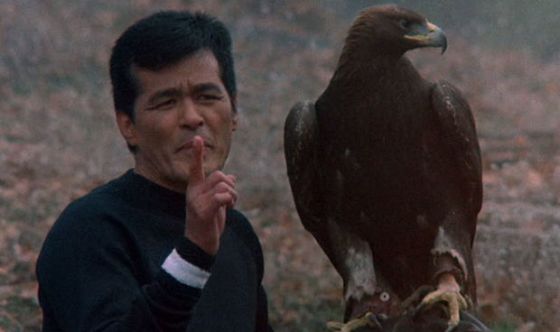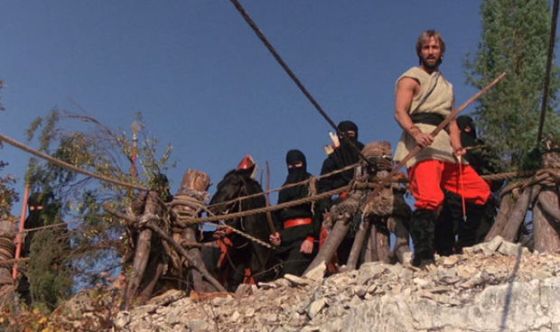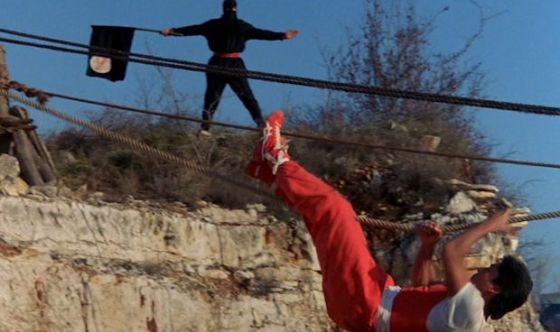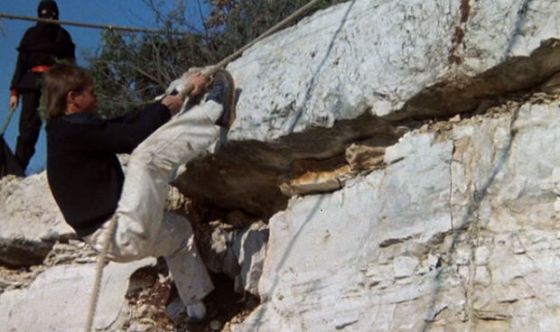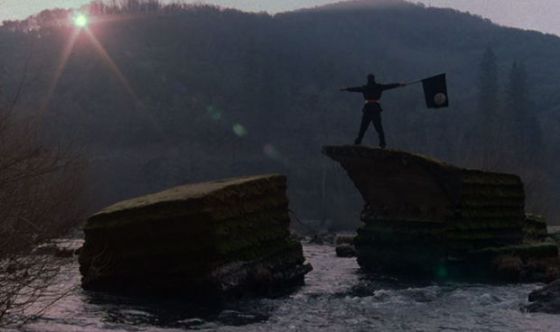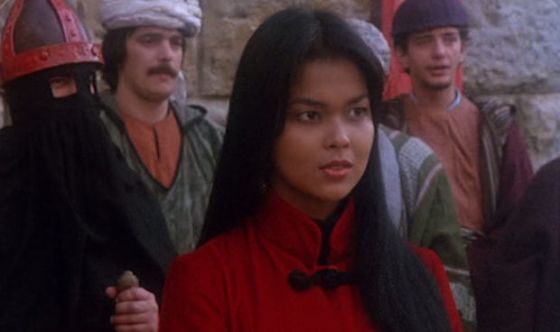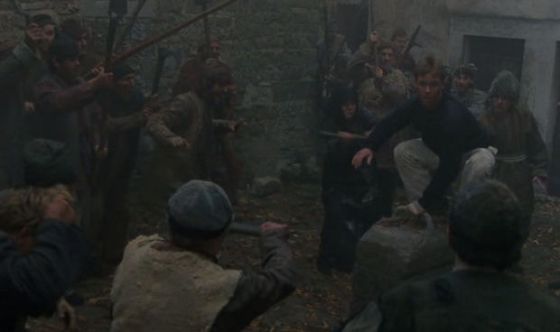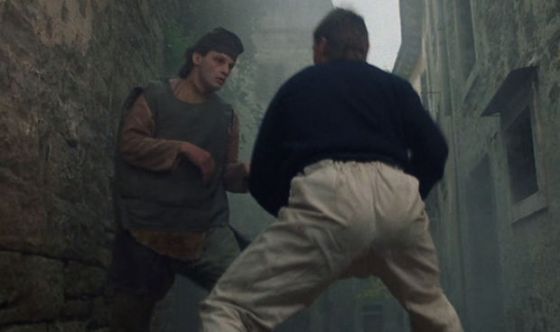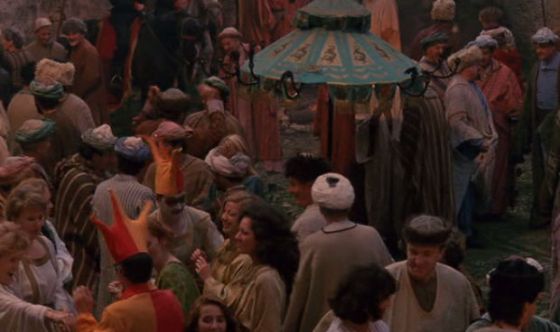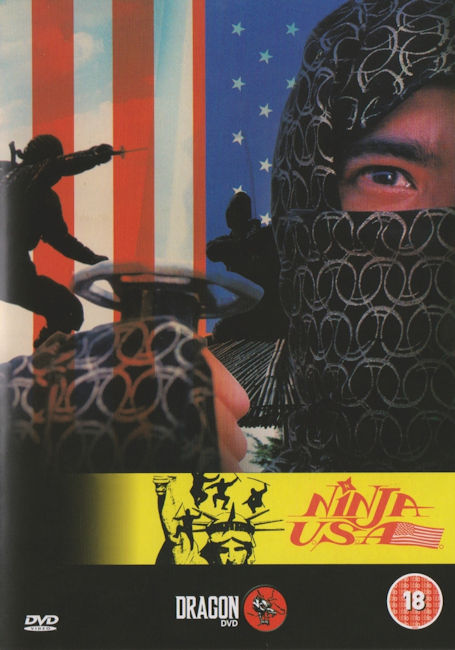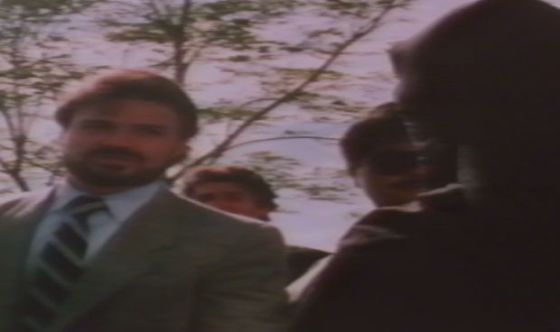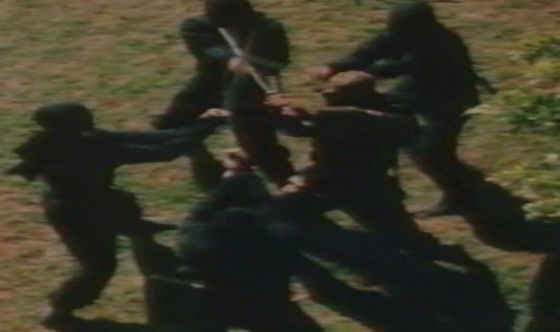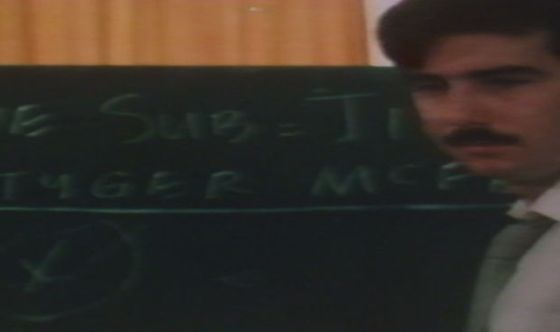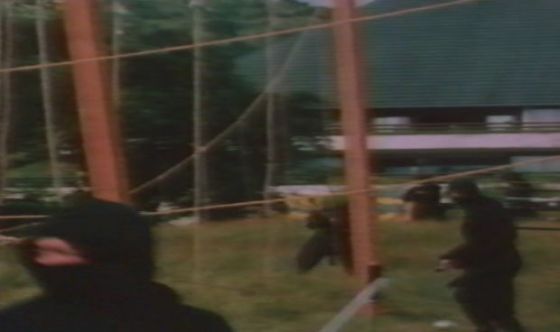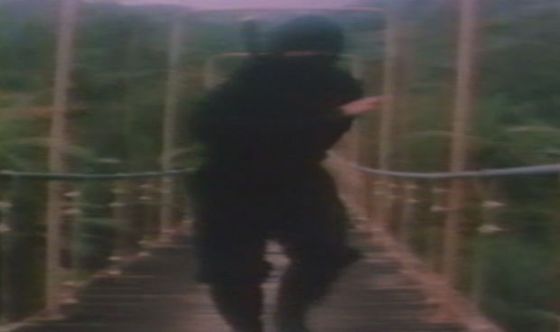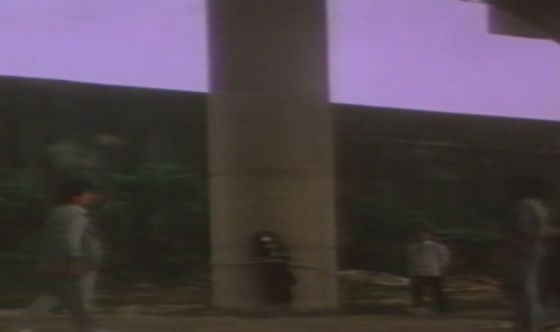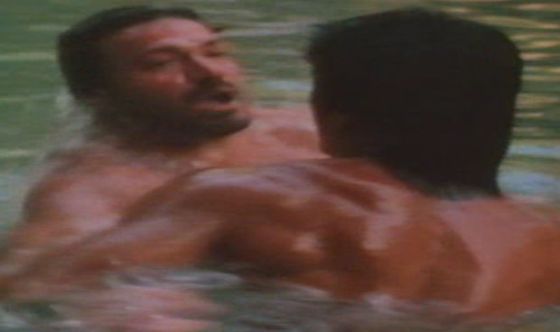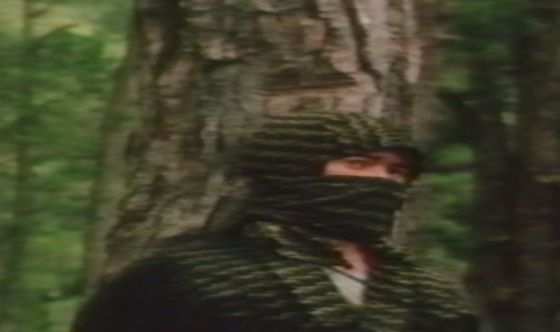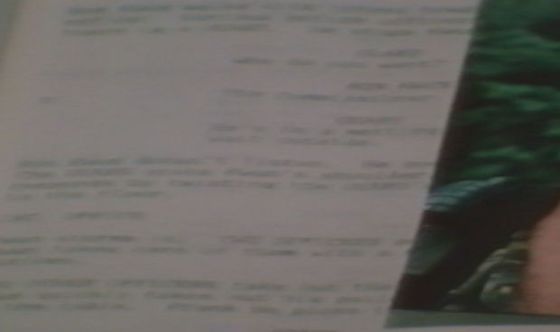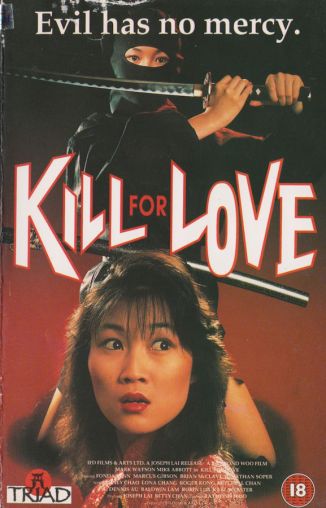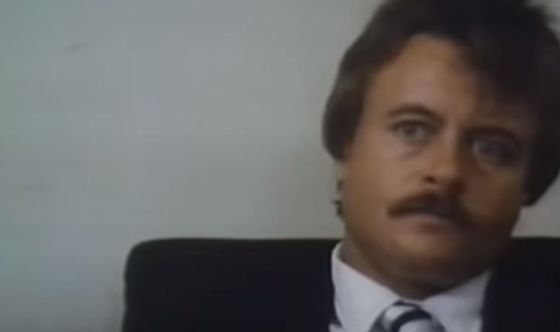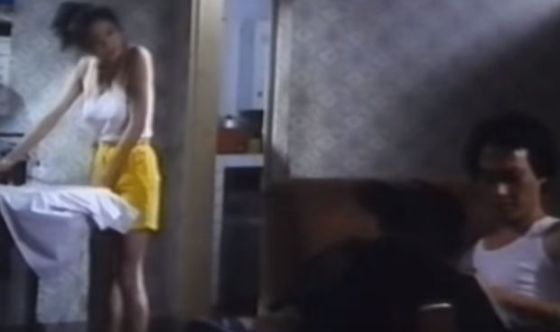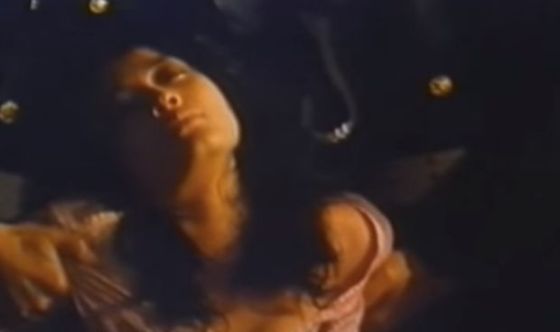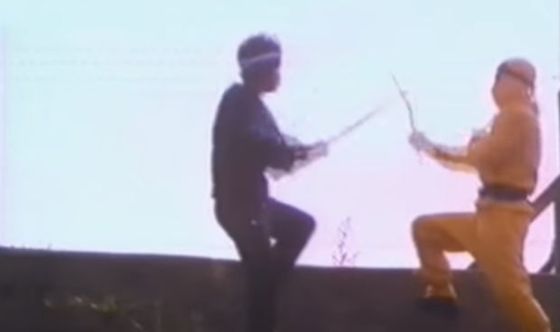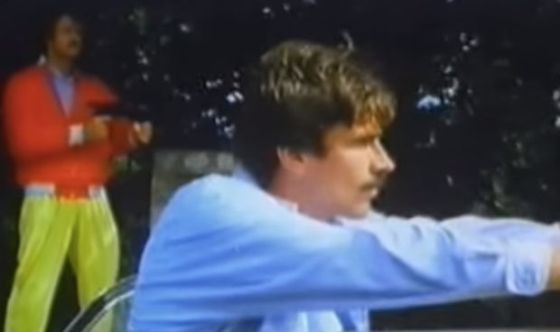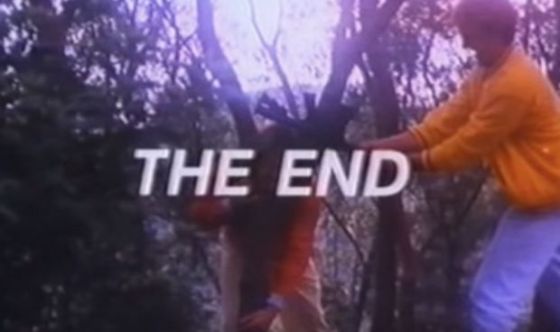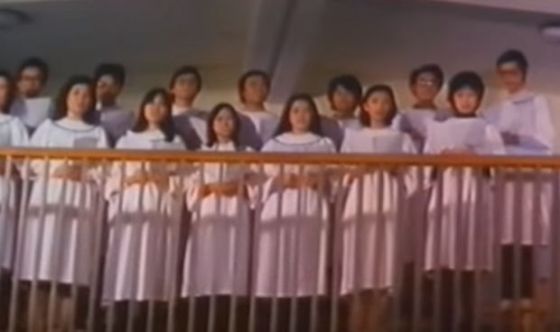Robert Clouse is famous for directing Enter The Dragon and the re-edited Game Of Death but also had an impressive string of reliable B-Grade action flicks under his belt, spanning some 20 years. From Black Belt Jones and Force:Five to the China O’Brien series (which I recently wrote lovingly about on Den Of Geek), Clouse could generally deliver the goods on a tight budget although Gymkata – the closest he came to riding the 80s ninja wave – is perhaps his most infamous picture. It won a Razzie Award and gained something of a cult following for being a classic “bad” movie but, in my considered opinion as a ninjologist, this is unfair. Gymkata is a hugely entertaining effort, it’s on the upper end of the B-Scale in terms of production value and, most importantly, it’s weird. Like, really really weird. If you like your martial arts psychotronic, this is one of the greats.
Even Gymkata’s inception is a strange one, blending elements so immediately disparate that the result could only ever be crazy. Producer Fred Weintraub saw Kurt Thomas in a TV commercial and decided that he should be in a martial arts film, unusual in itself since Thomas – an Olympic gymnast – had no martial arts nor filmmaking experience. Weintraub was so inspired, however, that he created the style of ‘Gymkata’ – an east/west martial arts hybrid that blended karate with gymnastics – and hired Robert Clouse to make a movie around it. Working with Weintraub and screenwriter Charles Robert Carner, Clouse decided to incorporate the Gymkata style into an adaptation of The Terrible Game, a 1957 pulp adventure novel by Dan Tyler Moore, updating it to include the two most popular B-Movie tropes of the 1980s: impending nuclear war and, of course, ninjas.
Weirdly, since the novel was written at the paranoid beginning of the Cold War, it didn’t take a lot of work bringing it forward to the paranoid apex of the Cold War. Originally, the plot revolved around a Yale student called Jonathan Burr who gets sent to a fictional Himalayan country that hosts a medieval-style tournament where the winner gets granted one request by its ruler. In order to block Russia’s most important weapon transportation route (located in said fictional country), Jonathan’s request will be to station a US weapons base there. Dan Tyler Moore, when writing The Terrible Game, drew on his own WWII experiences as an intelligence officer as well as his relationship with his father (Dan Tyler Moore Sr), an army lieutenant most famous for punching President Roosevelt so hard in the eye that he lost sight in it (honestly, there’s just a goldmine of trivia in this film, the deeper you go). A lot of the existential masculinity crises of the novel are (thankfully) missing from the film but the basic story isn’t too far off.
In the movie, Jonathan Burr is renamed Jonathan Cabot, is played by Kurt Thomas and is a gymnast hired by the US government to compete in the aforementioned tournament in the fictional Nation State of Parmistan. Here his winning request, should he emerge victorious, will be to install a Star Wars Satellite there so the US can monitor all other satellites from within Parmistan and save the world from a nuclear attack. In fairness to Cabot, he does ask the obvious question (“Why don’t you send in the army?”) but is told by Special Intelligence that “military direct action isn’t our style… we need to send in one man” and obviously that man is… a gymnast. To be honest, if you can’t get behind this as a premise then you may struggle with the rest of the film but, if you’re prepared to just suspend disbelief and go with it in the interests of a cooler story then we’ll all have a swell time.
Gymkata starts with Cabot’s training montage as Tadashi Yamashita and Clarence “Sonny” Barnes teach him the ways of martial arts (Yamashita with an eagle on his arm and some mystical ninjutsu pep talks, Barnes channeling the ghost of Terry Crews Future with a horse and some shouting). He also meets Princess Rubali, the Kahn of Parmistan’s beautiful daughter (Playboy model Tetchie Agbayani), who’s invested in helping Cabot win because her father – and Master of the Game – is about to be overthrown by his evil aide Zamir and needs US assistance.
Zamir meanwhile (a spectacularly villainous Richard Norton) has been rigging the Game and using his army of ninjas to kill competitors so that no one can win. His intention is to marry Rubali, assassinate the Kahn and use Parmistan’s prime location to make a deal with the Russians. With me so far? Don’t worry, I know this is a lot to take in but it’s swept out the way early because as soon as Cabot and Rubali land in “Karabal, on the Caspian Sea” (to give it the full name that everyone gives it constantly in the film) the action starts and doesn’t let up. To begin with, it’s all very James Bond style with Cabot and Rubali on the run from terrorists in Karabal. There’s car chases, stunts and shootouts to pass the time until the Tournament in Parmistan kicks off, then it’s all batshit obstacle courses, brutal duffings up and insane challenges of physical endurance.
Kurt Thomas may not be the greatest actor, he has far too pretty a face for your average martial arts hero and his silly red, white and blue preppy jumper doesn’t quite suit the genre either (apparently this was an item of his own clothing which Weintraub liked so much he told him to wear it on set), yet it’s still obvious why they cast him as the star. His gymnastic skills are frankly phenomenal and (with the help of some excellent choreography by Yamashita and Norton) his fights all really work here. The Gymkata style is unusual and, inevitably, inauthentic but nonetheless exciting to watch and, in these kind of movies, that’s what counts. Thomas also does all (but one) of his own stunts and most of them are breathtakingly daredevil. The fact that he earned a Razzie for what’s obviously a ton of hard work just reflects on how little the Razzies knows about genre cinema.
There are some great production design choices too, which keep the movie colourful. It’s shot on location in Yugoslavia and much use is made of the gorgeous scenery. The obstacle courses are all deadly looking, and the ninja judges – spaced out along the tournament to give directions, make decisions on cheating and occasionally kill people at random – are menacing and bizarre. There are also a few surprisingly beautiful, artful shots of them that certainly aren’t like anything in any other film:
Sure, there are some laughs to be had, from the dodgy oner-liners (“put your hardware back in your pants”) to the baffling – and kinda xenophobic – depiction of the fictional Parmistan as a country refusing to live in the 20th century. Everyone is dressed like it’s the Ottoman Empire (even the ninjas wear ancient pointy hats sometimes!) and logic frequently flies out the window yet, in its own way, Gymkata works. Within its own universe, detached from reality as it may be, the story makes sense.
Of course, the crowning jewel (and YouTube sensation) is the “Village of the Crazies” sequence – the last stage of the Game where Cabot finds himself in the village where Parmistan sends all its criminally insane people. As soon as he gets there, a man attacks him then chops off his own hand with a sickle (to which Cabot exclaims a chirpy “Oh jeez!”) and it only gets weirder, culminating in an unbelievable brawl on a pommel horse (just don’t ask why there’s a pommel horse in the middle of the village).
Although it’s surreal to the point of nonsensical, the village sequence has a genuine eerieness to it, from the illusory tricks to the hooded figures circling in the mist to the creepy-faced peasants (according to Kurt Thomas, all the extras apart from the obvious stuntmen were actual Yugoslav mental patients but I’m not sure I believe this). In its way, it reminded me of Lucio Fulci’s gothic horror trilogy and made me wonder how great it’d could’ve been if Robert Clouse had made a Lovecraftian zombie film… He has the (splintered) eye for it.
Whatever you think of the outlandish Crazies though, you can’t argue that Gymkata delivers scene after scene of stuff you’ve never seen before. There’s nutty settings, wild fighting, ninjas galore, a cast of trash superstars and almost non-stop thrills, leaving little chance that anyone renting this in the 80s would’ve been disappointed. When it comes to B-Videos, that’s a huge success. It even features a fight with Conan Lee (Ninja In The Dragon’s Den), although he does only get one line of dialogue (“Damn!”). Like many my age, I rented this time and time again as a kid. The plot’s simple enough for anyone to understand but, as an adult, I find myself going back for the weirdness, the cracking choreography and the (surprisingly high) level of violence and gore. Gymkata is a classic of the VHS era and still stands way above many of its peers. So no saying it’s bad around these parts!

